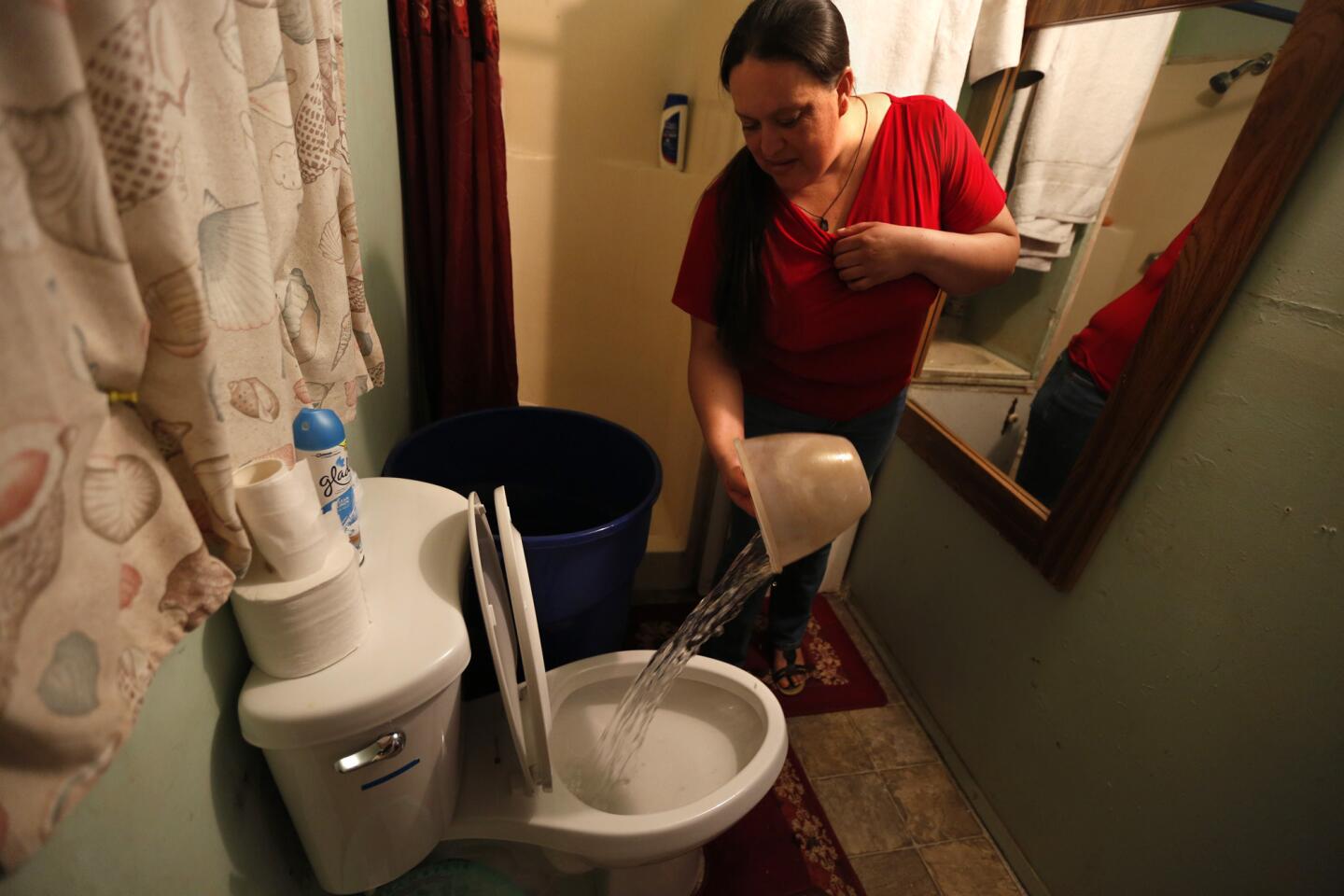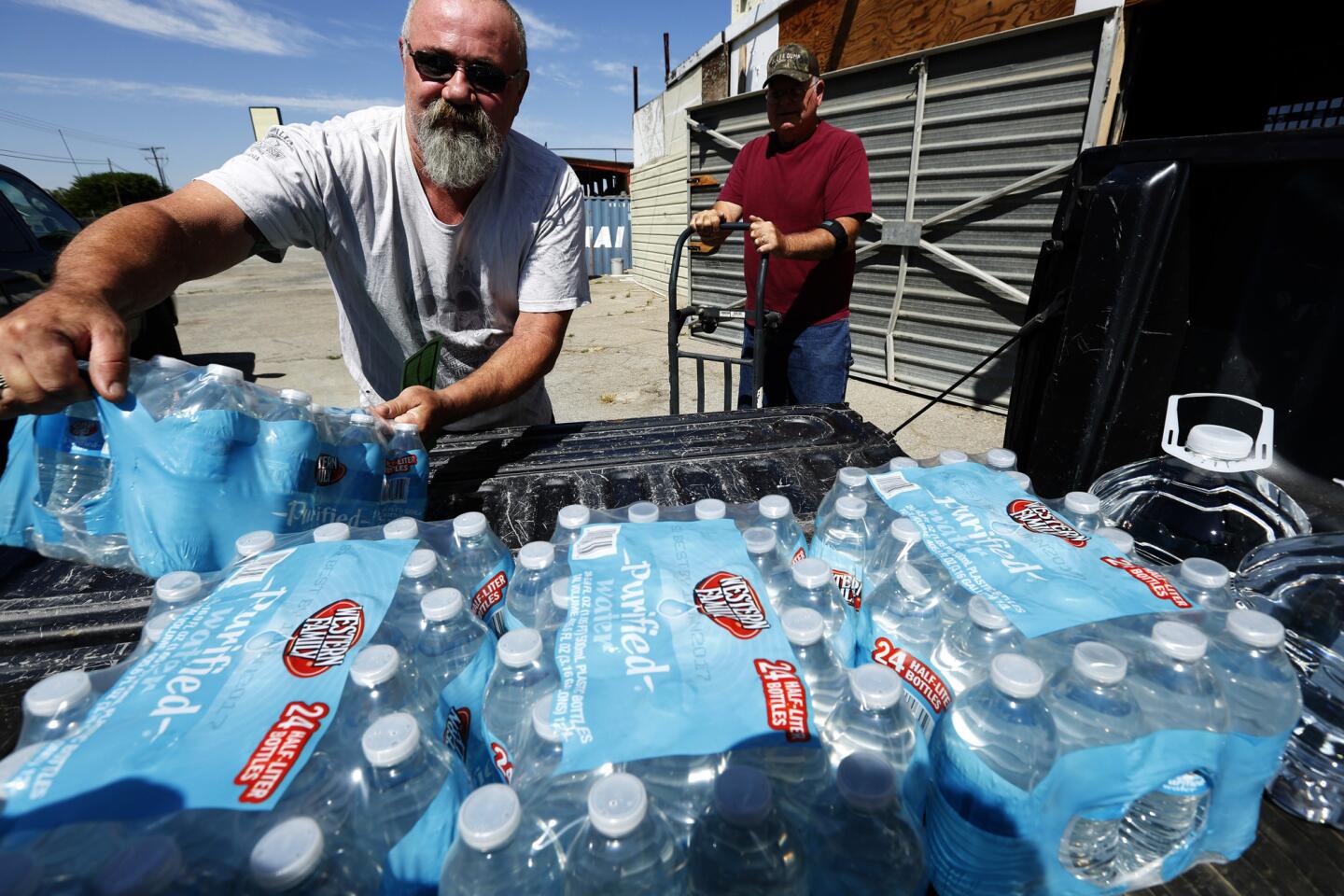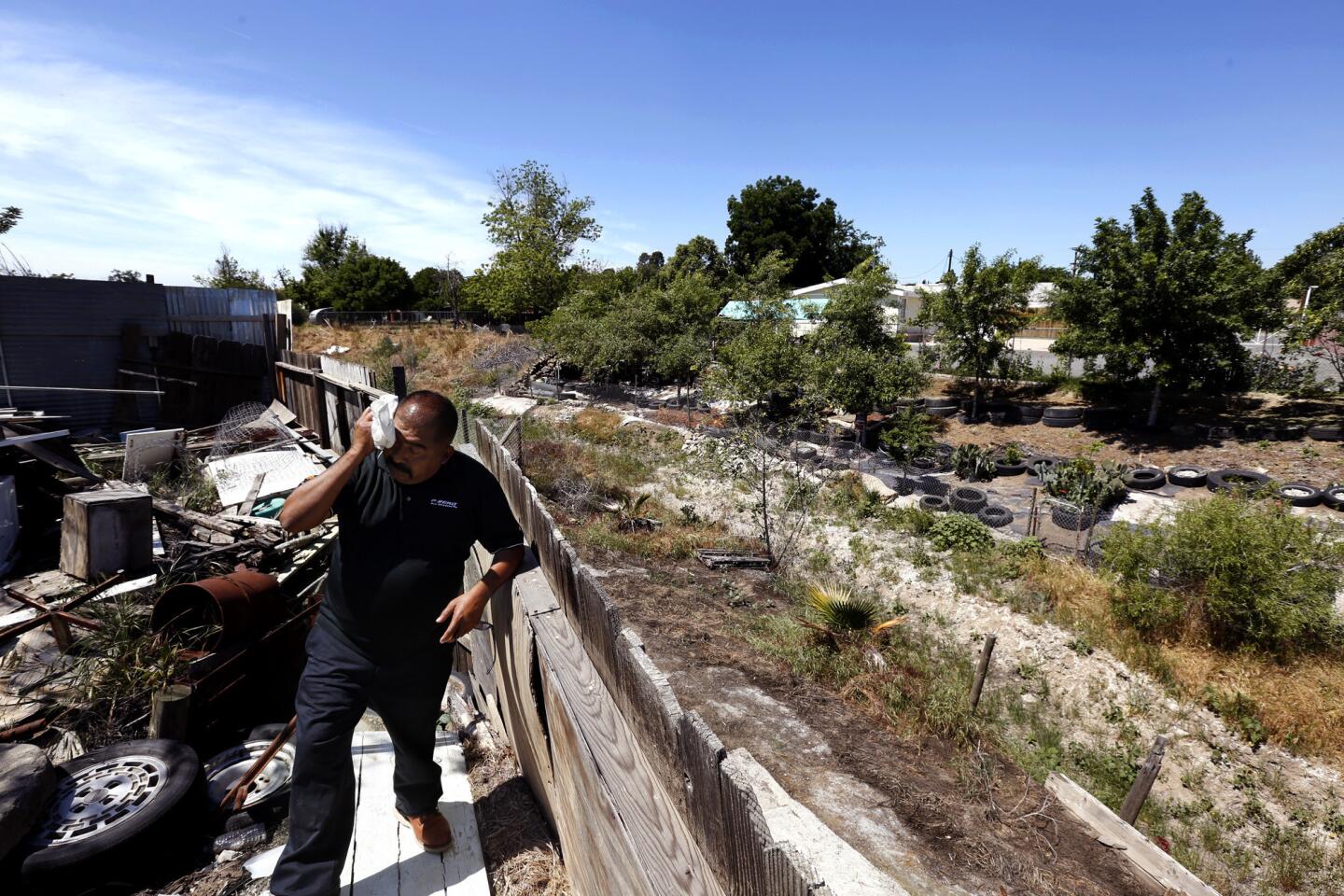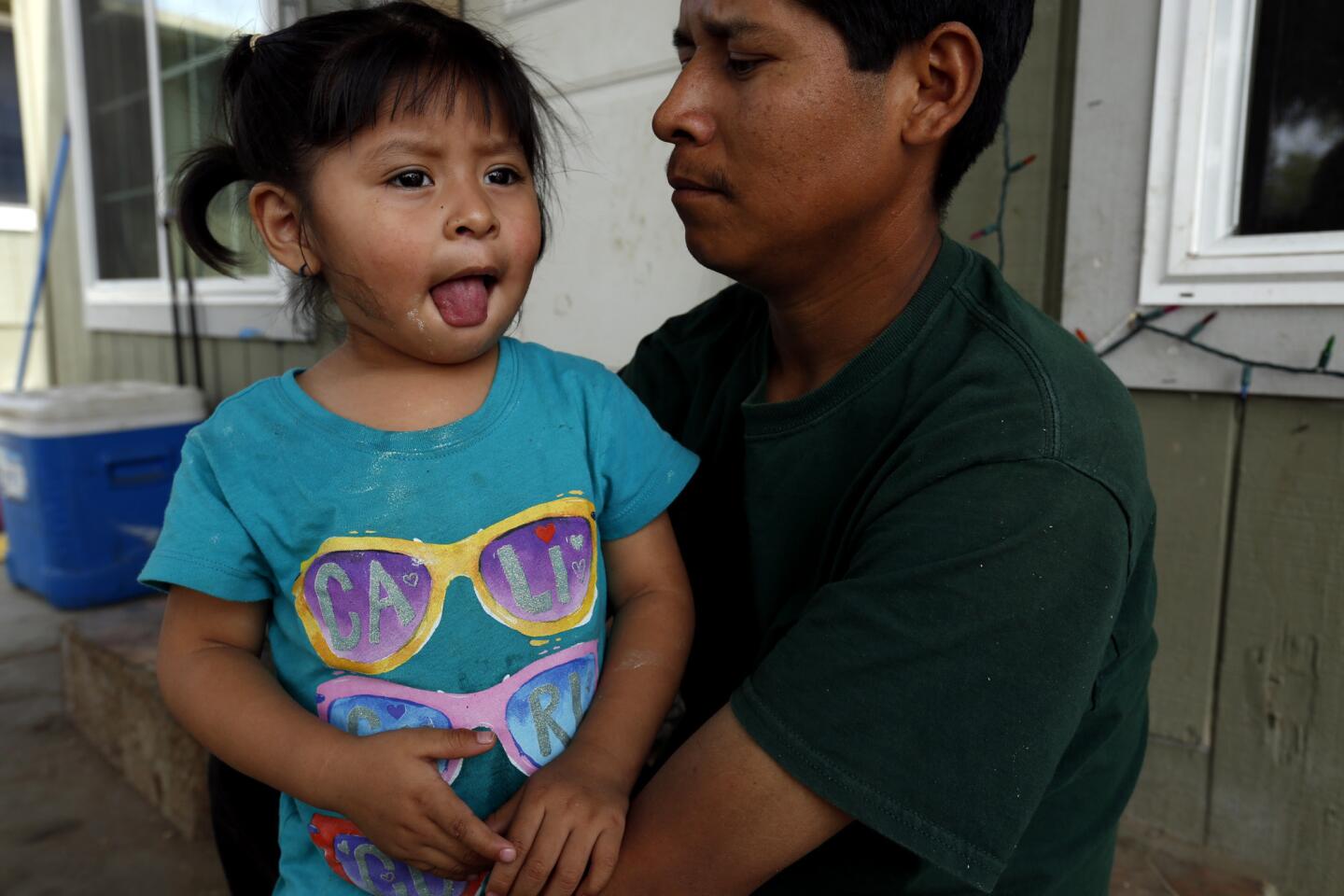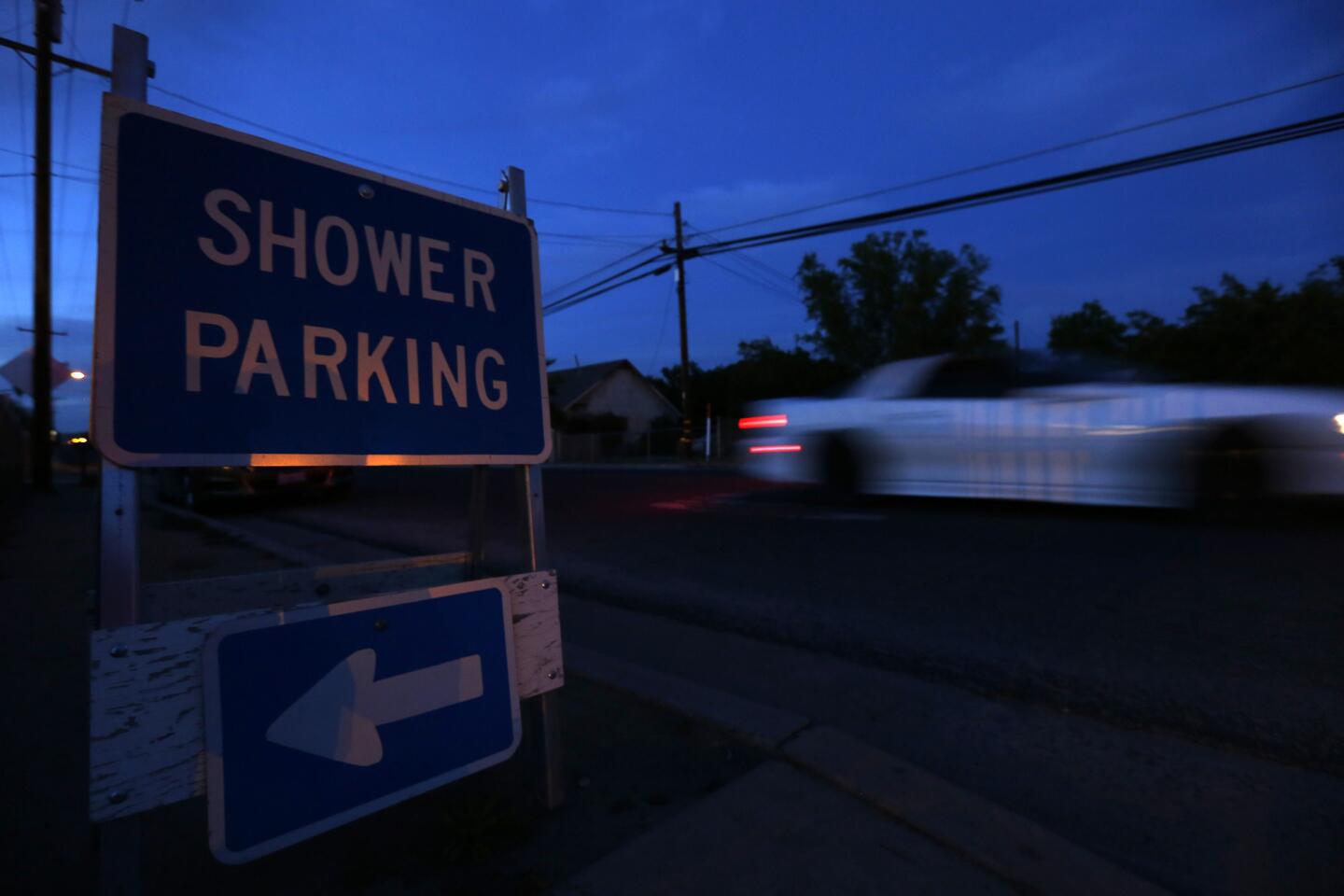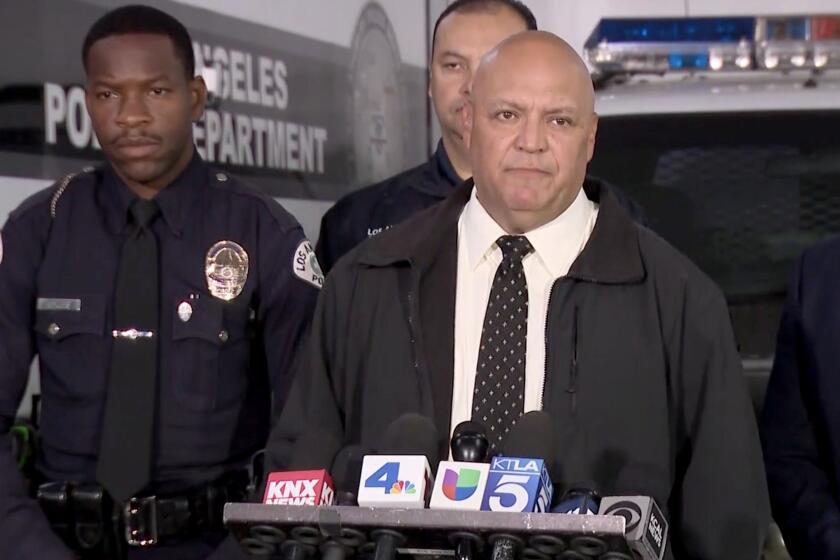The wells have run dry in this California town, so why is a $1.2-million water system untapped?
Two long summers ago, after Adela Ramos Arellano’s pump first began to sputter and wheeze, the 37-year-old field worker would return from a day spent laboring beneath the blazing sun to a home with no water.
Since then, “the cavalry,” as one onlooker called it, has descended on East Porterville, an unincorporated area in Tulare County that claims about 12% of the state’s failed wells. No fewer than nine government agencies and nonprofit organizations have had a hand in helping the community, which drew international media attention for its exceptional suffering in the fourth year of California’s drought.
But residents and even some government officials say progress has been painstakingly slow, if not altogether ineffectual. Last year, for example, state officials sank $1.2 million into a new well that remains untapped because of quarreling among government agencies.
As a result, the drought continues to punish the people of East Porterville. Even now, some residents have to use portable showers in a church parking lot and dump a bucket of water into their toilets to flush.
In bureaucrats’ latest and most ambitious attempt to help, state officials are preparing to build a municipal water system for East Porterville. They want to connect 500 homes by the end of the year and ultimately deliver safe, drinkable water to all 1,750 parcels here by the end of 2017.
“We’ll have to see if they come through with their promise,” Ramos Arellano said in Spanish. “I have hope. That’s the last thing I’m going to lose.”
::
At first, the solutions were crude. The nearby city of Porterville spent much of 2014 delivering water to fill people’s plastic, 300-gallon containers, which had mostly been donated by dairies and were unsuitable to drink from.
Residents relied on bottled water — at first donated, then provided by the state and county, but even getting that going proved difficult. A drought emergency, officials quickly discovered, did not fall neatly into traditional state grants, and there was no blueprint outlining exactly how to deliver potable water to such a large area.
“In any typical disaster you have something you can see. You can fly, drive, whatever, and it’s clear,” said Andrew Lockman, manager of the Tulare County Office of Emergency Services. “We have a basic emergency management structure … a framework, but this was a new type of incident. We had to come up with a new response.”

There are about 500 homes in the East Porterville area with reported dry wells. The state wants to connect those homes to the city’s water system by the end of the year.
As bureaucrats puzzled over the possibilities, Ramos Arellano’s family had to haul water in by the bucket, even after they got a dairy container. Every other day they trekked to the fire station for a refill because the deliveries did not come often enough.
By January 2015, officials rolled out a short-term plan. The county worked with nonprofit organizations and used state disaster funding to install massive green tanks that could hold thousands of gallons of drinkable water and be connected to a home’s plumbing. Those tanks now consume more than 160 frontyards.
Families say they have learned to monitor the thin red band that slides down their tank’s PVC pipe as water inside dwindles. As the ring falls, dirty dishes pile up and toilets fill until the water hauler comes rumbling down the street.
“These families need so much more help than a tank,” said Roman Hernandez, a 57-year-old pastor who, for the last several months, has watched people visit his church’s parking lot to sign up for bottled water or use the mobile showers.
His suggestion? Drill more wells — or at least get water from the one that has already been drilled.
::

Many residents of East Porterville have been without running water over the past two years.
Last summer, the county and the state agreed to construct a well using $1.2 million from the California Department of Water Resources. Construction was completed in October, but infighting trumped people’s desperate need for water.
The county had agreed to sell the well to the city of Porterville, which had staff members who could operate it. But the city, county and state disagreed on who should get water from the project.
The dispute ultimately led the state to pull out of the discussions and draw up plans for a facility where water haulers could fill up without involving the city. Porterville reacted by cutting off Tulare County’s access to water from its municipal system. The county then had to scramble to find new water sources to fill the green tanks in residents’ yards.
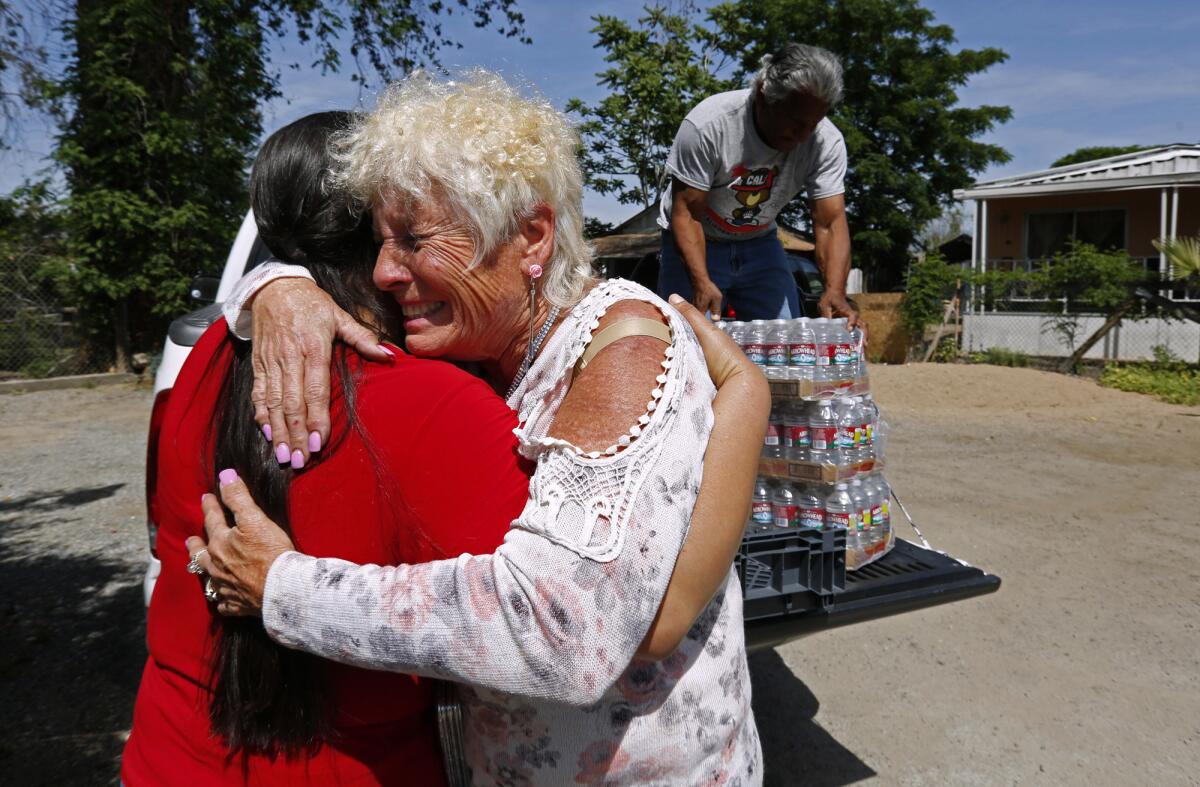
Donna Johnson, right, hugs Guillermina Andrade while delivering water with Ruben Perez to Andrade’s home.
Since the fall, the well has remained hidden and untapped at the end of a dirt road, near the spot where this city’s mini-malls give way to endless alfalfa. The bickering among agencies is beside the point for residents like Guillermina Andrade, struggling in a forgotten corner of town.
On a recent afternoon, Andrade, 38, stepped gingerly around dozens of boxes and buckets scattered and stacked on the floor of her modest home. The boxes hold jugs of Sparkletts water for drinking; the buckets hold tank water for dishes, bathing and flushing. Inside the bigger buckets, smaller ones float, to be used as giant measuring cups.
Andrade stood in the shower and demonstrated her routine; it is the same whether she is flushing the toilet or trying to bathe: Scoop, lift, pour.
“Very difficult,” she said in Spanish. “Hopefully [something] will happen soon. It’s been two years already.”
::
If everything goes according to the state’s plan, sometime this year construction crews will tear up Andrade’s street, install miles of water mains and ask her to sign an agreement that will make her a customer of the city of Porterville.
As a result of the multi-agency tangle over the well, the Department of Water Resources sought a more aggressive and permanent solution. Frustrated officials decided they would build a municipal water system for the people of East Porterville themselves.

Many East Porterville residents have been forced to reply on portable showers since wells began running dry two years ago.
The system, if approved by local officials, would draw from the new well, pumping water through newly laid piping to about 500 homes in East Porterville and a portion of Porterville.
The project will cost about $7 million. The state is currently spending about $500,000 a month on the tank and bottled water programs.
The State Water Resources Control Board, meanwhile, is in charge of a longer-term plan to install fire hydrants, create water storage facilities and hook up the remaining 1,250 homes in East Porterville as early as the end of 2017.
“There are a million ways this can go wrong,” said Greg Farley, drought manager for the Water Resources Department. “This is like putting in a water system for a whole city in a year. It’s a big undertaking.”
And in this town, getting the word out to residents, giving them a voice and securing their trust could also prove difficult.
Federal data suggests that more than a third of the population falls below the poverty line; about 75% of the community is Latino; many don’t speak English, many more prefer not to speak up. And the federal data does not count the hundreds of people who lack proper immigration authorization living in East Porterville.
Community and nonprofit leaders say many of East Porterville’s immigrants have been reluctant to sign up for government assistance, all but certain they will be deported. Some parents have worried that if they admit that their homes are without water, officials will seize their children. And county officials say they are still struggling to get renters on the water tank program, in part because landlords don’t want code-enforcement officers to visit and discover violations.
“There’s a lot of fear out there right now,” said Ryan Jensen of the Visalia-based nonprofit Community Water Center. “The voice that’s missing at that table is East Porterville itself.”
On a recent Tuesday morning, a steady flow of locals stopped at an outpost on Plano Street, handed volunteers their punch cards and loaded bottled water into the trunks of their cars. One man said he was unaware of any state plan to build a water system. Another said he was concerned that if he agrees to hook up to the city’s water system, engineers will cap his well and officials will limit how much city water he can use.
To help ensure they get a say, residents recently formed the group East Porterville for Water Justice.
Rafael Surmay, 47, attended a meeting in April, and now he recognizes neighbors who are also out of water when he runs into them around town.
In 2000, Surmay moved his family from San Jose to East Porterville, where he could buy land and fulfill his California dream for just $50,000. Six years later, roses bloomed in his yard, Surmay’s youngest child was born, and the postman even had enough money to buy another property on the west side of town.
“Everything was perfect,” he said.
Then one day, about two years ago, Surmay was on vacation with his family when a neighbor called his wife with “bad news.”
When he returned home to a dry well, he unwittingly began what has become a familiar sequence for people here: He hooked up to a generous neighbor’s working well and got a 300-gallon container, then a 2,500-gallon green tank.
What he did not do was abandon his house — not when the roses wilted, not when his neighbors fled, not when a banker suggested it might be best. He did not leave even though he owned that other property on the west side of town — a house with running water hooked into the city’s system.
No, this house in East Porterville “is my first love,” he said.
So he modified his mortgage and bet big on the state.
“There is a solution for everything,” he said, standing tall in front of his yard. “I wanna fight.”
Twitter: @ByMattStevens
Times staff writers Cindy Carcamo, Brittny Mejia and Marisa Gerber and Times researcher Scott J. Wilson contributed to this report.
ALSO
San Andreas fault ‘locked, loaded and ready to roll’ with big earthquake, expert says
Grim Sleeper verdicts bring justice to forgotten victims of serial killer, families say
Inside North Korea’s Children’s Palace, a reporter finds children turning into robotic grown-ups
More to Read
Start your day right
Sign up for Essential California for news, features and recommendations from the L.A. Times and beyond in your inbox six days a week.
You may occasionally receive promotional content from the Los Angeles Times.


